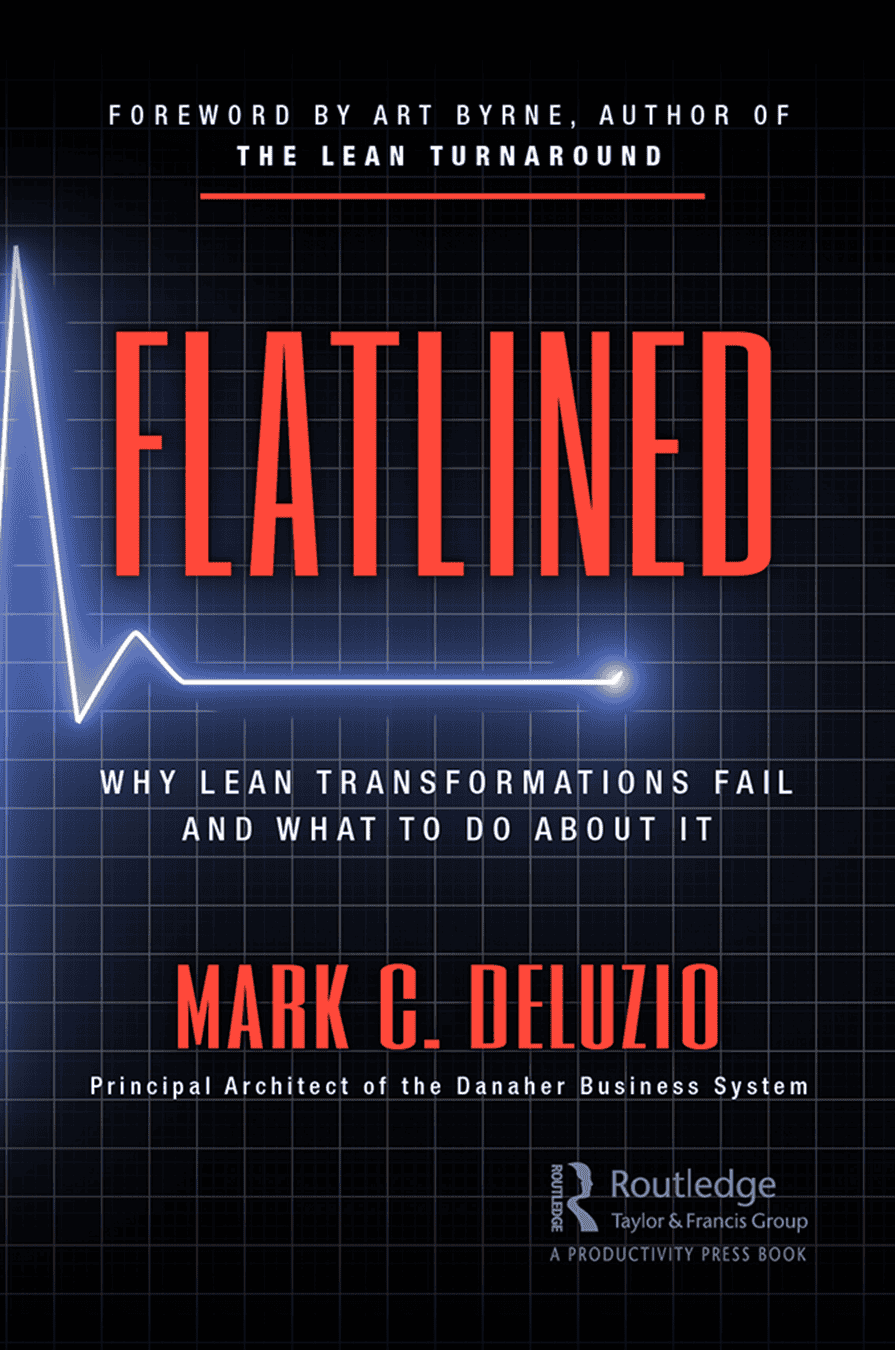The 7 Flows of Manufacturing are critical components of advanced Lean thinking, yet many manufacturers overlook their transformative potential. This comprehensive methodology offers a fresh perspective on production processes, challenging traditional views of efficiency and waste reduction. Organizations can uncover hidden inefficiencies by examining seven critical flows—raw materials, sub-assemblies, assembly, information, equipment, engineering, and people—and dramatically improve their operational performance.
Mark DeLuzio, Founder and CEO of Lean Horizons Consulting and principal architect of the Danaher Business System, and Jon Boucher, Managing Director at Lean Horizons Consulting, bring decades of experience implementing these strategies. Their insights reveal how the 7 Flows concept can revolutionize manufacturing operations, from the shop floor to the executive suite.
It’s essential to understand that the 7 Flows are not isolated concepts, but rather interconnected processes that form a comprehensive system. There is overlap, and visualizing these flows as a Venn diagram can be helpful. Jon Boucher explains, “You can do them individually, or you can do them together, but you can never do just one without the other six.” This perspective encourages manufacturers to view their operations holistically, recognizing how improvements in one flow can impact and enhance others.
This article explores the intricacies of the 7 flows, demonstrating how they interconnect to form a powerful system for operational excellence. It examines the practical applications of the 7 Flows of Manufacturing approach and its potential to drive significant improvements in productivity, quality, and responsiveness to customer demands.
Keep reading to learn how implementing the 7 Flows methodology can transform your processes, overcome common operational challenges, and position your organization at the forefront of Lean manufacturing excellence.
Materials Flow: Foundation of Production Excellence
The flow of materials serves as the bedrock of efficient manufacturing, encompassing raw materials, sub-assemblies, and assembly processes. Jon Boucher emphasizes the importance of this flow, explaining, “You’re not necessarily looking for how things flow, you’re looking for when they don’t flow.” This insight underscores the need for manufacturers to develop a keen eye for disruptions and inefficiencies in their materials handling.
To optimize the materials flow, Jon suggests a series of questions to “interrogate” the materials:
- What are you?
- How many of you are there?
- Should there be that many?
- Where did you come from?
- Are you in the right place?
- How old are you?
- How long have you been here?
- How long are you supposed to be here?
- Where do you go next?
- When should you go there?
- How do you know where to go next?
- How will you get where you need to go?
By scrutinizing the materials flow through these questions, organizations can identify bottlenecks, reduce excess inventory, and ensure smooth production initiation. Effective management of this flow sets the stage for efficiency throughout the manufacturing process, creating a solid foundation for operational excellence.
Information Flow: The Nervous System of Manufacturing
Information flow is the nervous system of any manufacturing operation, coordinating activities and enabling informed decision-making. However, many organizations struggle with fragmented or outdated information systems that hinder rather than help their operations. As Jon notes, “Technology tends to drive information into secret places,” making it harder for teams to access and utilize crucial data. Effectively managing the information flow requires a commitment to real-time, accurate, and accessible data throughout the production process.
While digital systems are here to stay, Jon acknowledges, “We can’t separate ourselves from the real world, these systems aren’t going away, nobody’s going to take them out, so we’ve got to learn to learn to live with them.” The challenge is to make information as visible and accessible as possible within these systems.
Mark highlights the importance of visual management in information flow: “If I can’t see it, it doesn’t exist.” This principle underscores the need for transparent, readily available information at every production stage. Effective information flow establishes one-to-one relationships between physical materials and their digital representations, ensuring that the information system accurately reflects the reality on the shop floor.
Equipment Flow: Adaptability in Action
The equipment flow challenges traditional notions of fixed, immovable machinery, offering a paradigm shift in how manufacturers view their production assets. This concept emphasizes the value of using flexible, adaptable equipment that teams can quickly reconfigure to meet changing production needs. Organizations that have a deep understanding of the equipment flow can achieve unprecedented levels of responsiveness and efficiency.
Optimizing equipment flow involves not only the physical arrangement of machinery but also its maintenance and calibration. This holistic approach ensures consistent performance and quality output, further improving overall manufacturing efficiency. Effective management of the equipment flow enables manufacturers to gain the ability to adapt to market changes and capitalize on new opportunities quickly.
Engineering Flow: Proactive Quality Assurance
The engineering flow represents a fundamental shift from reactive to proactive quality management. This approach focuses on controlling inputs to ensure quality outputs, moving beyond traditional end-of-line quality checks. By emphasizing the accuracy and reliability of inputs, manufacturers can significantly reduce defects and improve overall product quality from the outset.
Effective engineering flow management includes real-time calibration and maintenance of gauges, fixtures, and cutting tools. This proactive stance ensures that every aspect of the production process contributes to product excellence. Organizations that understand the engineering flow can substantially improve efficiency and product consistency, setting new standards in their industries.
People Flow: Maximizing Human Potential
The flow of people is perhaps the most critical element of the 7 Flows framework, with safety being the primary focus. As Jon emphasizes, “It’s all about the safety.” This flow emphasizes the safe, necessary, and purposeful movement of workers within the production environment.
Optimizing the people flow involves creating clear, visible standards that guide worker actions and movements, ensuring both efficiency and safety. Key questions to consider include:
- Is any and all movement safe?
- Is any and all movement necessary?
- What tells people when to move?
- What tells them where to move to?
- Is anybody moving in a non-standard condition?
- Are people moving without instructions?
By focusing on people flow with safety at the forefront, manufacturers can reach new productivity levels, foster a culture of continuous improvement, and create a more engaging and secure work environment. The people flow recognizes the central role that human workers play in the manufacturing process and seeks to optimize their contributions while prioritizing their wellbeing.
Implementing the 7 Flows Approach
Adopting the 7 Flows methodology requires a fundamental shift in perspective and a steadfast commitment to improvement. Organizations embarking on this journey should begin by conducting thorough assessments of each flow and asking probing questions to identify areas of waste or inefficiency. It’s crucial to remember that these flows are deeply interconnected, each influencing and being influenced by the others.
Successful implementation of the 7 Flows approach involves engaging team members at all levels of the organization. Manufacturers can tap into their workforce’s collective knowledge and creativity by fostering a culture of observation and collaboration. Dedicated time for teams to practice applying the 7 Flows concept gradually builds hands-on experience and insight, driving ongoing operational improvements.
Transforming Manufacturing Through the 7 Flows
The 7 Flows approach offers a comprehensive framework for analyzing and improving manufacturing operations, promising transformative results for organizations willing to embrace its principles.
By examining and optimizing the 7 flows of manufacturing, organizations can identify hidden inefficiencies and achieve new levels of productivity and quality.
As you consider implementing the 7 Flows methodology in your organization, remember that experienced guidance is invaluable in navigating the complexities of this multi-faceted approach. Lean Horizons Consulting, with decades of experience in Lean implementation, is uniquely positioned to help you harness the full potential of the 7 Flows in your manufacturing operations.
Don’t let your manufacturing transformation fall short of its potential. Contact Lean Horizons Consulting today to learn how our team can partner with you to optimize your operations and drive sustainable, long-term success.

